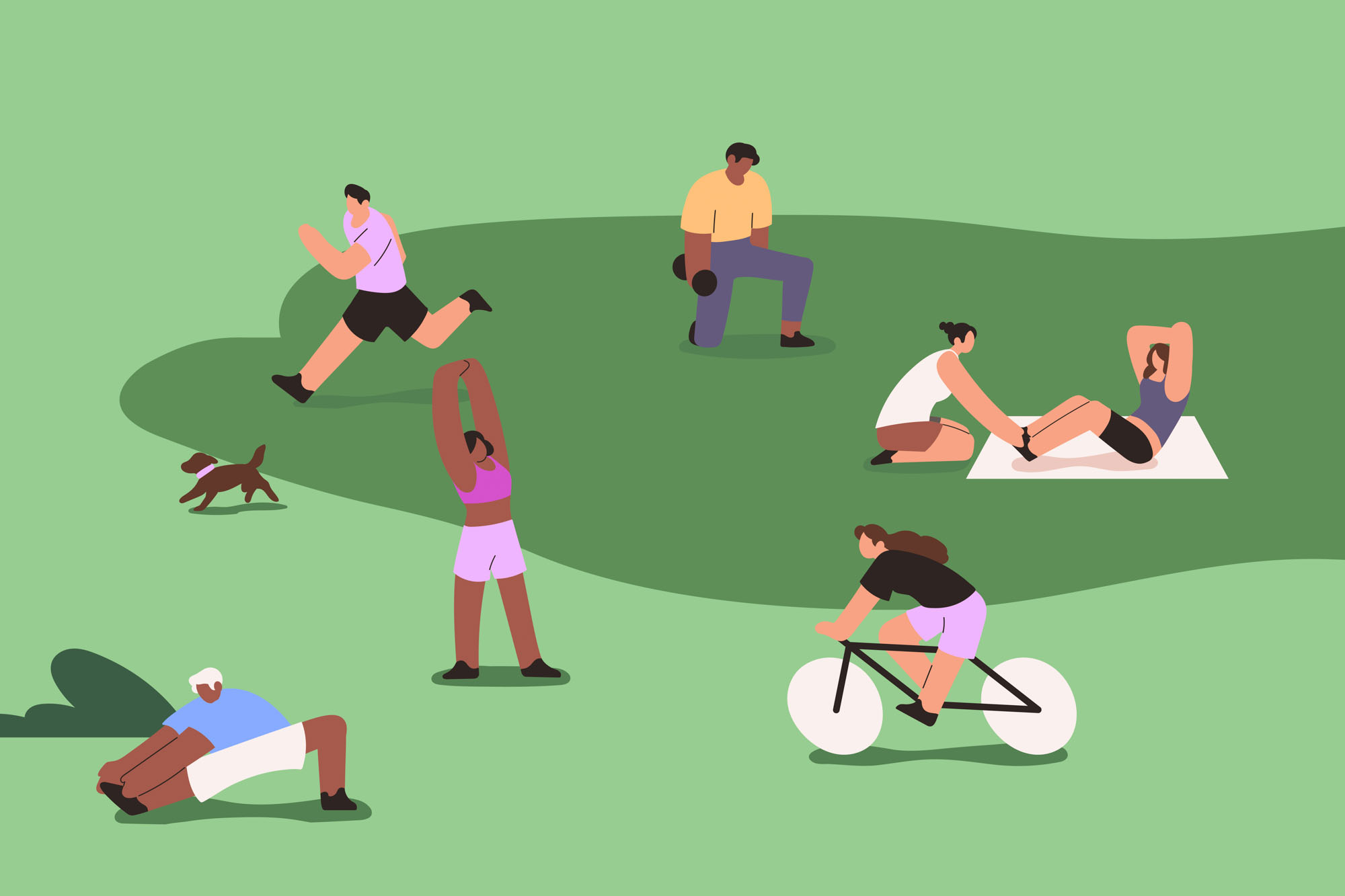Exercise Safely in Summer
by Hugo Bravo

When we exercise, our heart, muscles, and lungs work harder than usual. Adding summer’s soaring temperatures and humidity to all that activity can put stress on our bodies, no matter our age or fitness level.
Since the body prioritizes cooling, heat increases the amount of work done by our anaerobic system, the metabolic process that creates energy for bursts of intensive physical action, and we get tired more quickly. (If you’ve ever tried to get in 1 last mile on your run or a few extra push-ups, your anaerobic system is hard at work, and you may “feel the burn.”) You can also lose a liter of sweat (or even double or triple that!) per hour of exercise in the heat. Sweat is how your body cools itself down, and if you don’t replace the lost fluids with proper hydration, your blood volume decreases, and your body struggles to maintain its core temperature.
Cold-weather exercisers tired of heavy sweat suits or endless treadmill sessions look forward to summer and outdoor training, pickup games at the park, and breezy runs. Some even prefer the extra challenge that comes with the heat and humidity. No matter what gets you out there, there are steps you can take to keep yourself healthy and your workout productive.
Set the right time for your workout.
Exercise in the morning or later in the evening, when temperatures can drop to a more tolerable level.
Watch what (and when) you eat.
Our bodies need food for fuel. But give yourself time between eating and working out in the heat. Your body uses blood and energy to digest food. That creates extra body heat, which is what you need to avoid during exercise. Wait an hour after eating a light meal, like fruit or yogurt, and two to three hours for bigger meals, such as burgers or chicken. Heavy, protein-filled foods take longer to digest.
Take care of your skin.
Skin tissue is designed to move warm blood away from vital organs, keeping them cool. Help your body stay at a comfortable temperature by wearing loose, lightweight clothing, ideally made of moisture-wicking fabrics, which pull moisture away from the skin to cool it. And wear sunscreen if you’re going to be outside to avoid an inflammatory sunburn.
Stay hydrated.
Start drinking water an hour before your workout, during the workout itself, and afterward. Try to aim for a half liter to a liter for every hour you’re exercising in the heat. If your workout is going to be longer than an hour, you might want to include a sports drink or enhanced water to replenish electrolytes and sodium lost in sweating.
Heat Exhaustion and Heatstroke
Dehydration and exercising in high temperatures and humidity can lead to a condition called heat exhaustion. Symptoms can include fatigue, nausea, shortness of breath, and muscle cramping. If you’re with someone suffering from heat exhaustion, immediately move them indoors or to a shaded area away from the sun. Pour water over their head or spray them with cold mist, focusing on cooling their head and face, armpits, and abdomen. These are all areas of high blood flow. When cooled, the blood from those parts travels to help refresh vital organs.
Without treatment, heat exhaustion can turn to heatstroke, a life-threatening condition where heat overwhelms your body’s ability to control its own temperature. Heatstroke doesn’t always happen outside or during exercise. It can develop within a very warm, enclosed space, like a home without air conditioning, or inside a car in the summer. It shares some symptoms with heat exhaustion, except for one significant difference: Heatstroke can affect brain function, causing confusion, dramatic changes in behavior or mood, and slurred speech. If you notice signs of heatstroke in yourself or others, call 911 immediately.
Source: “How to exercise safely in the heat” by Suzette Lohmeyer, NPR.org

